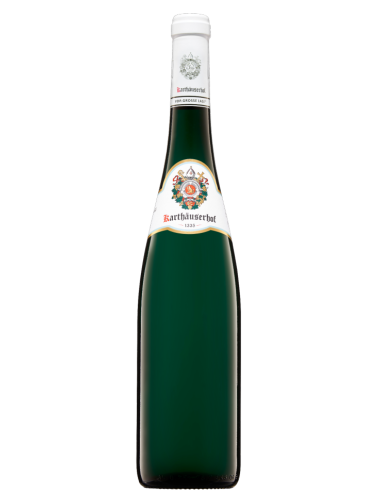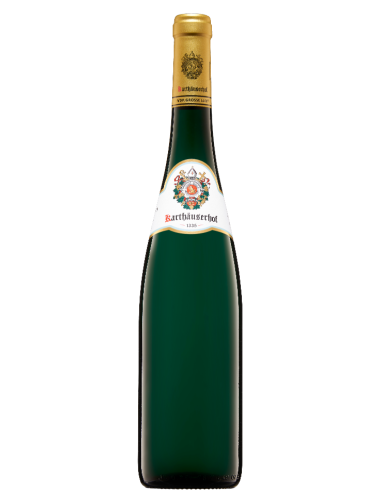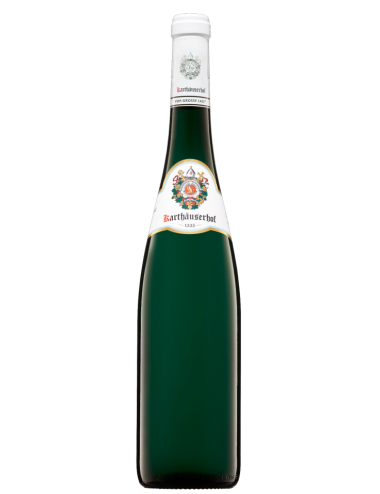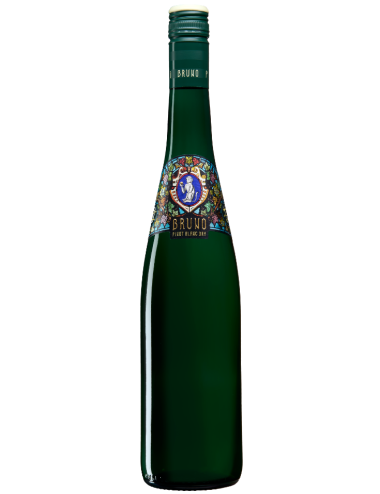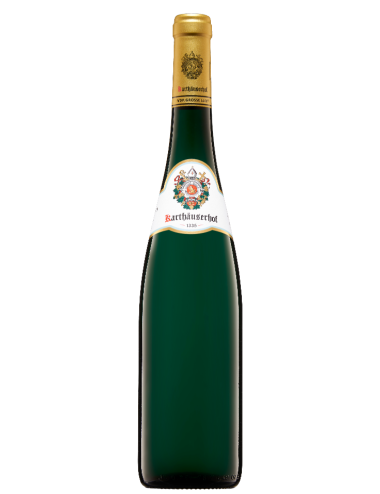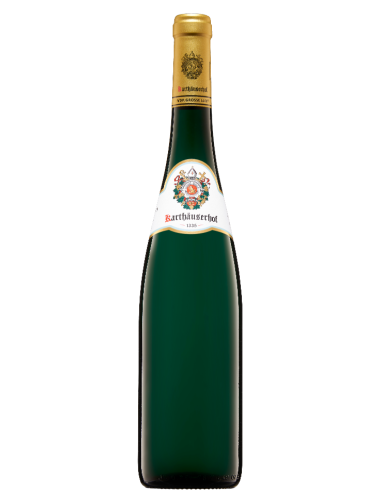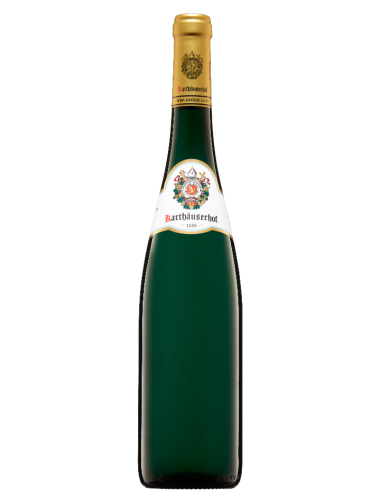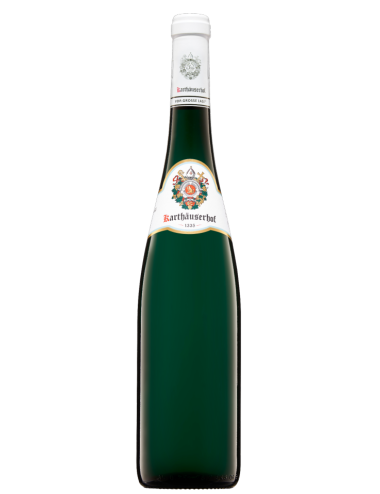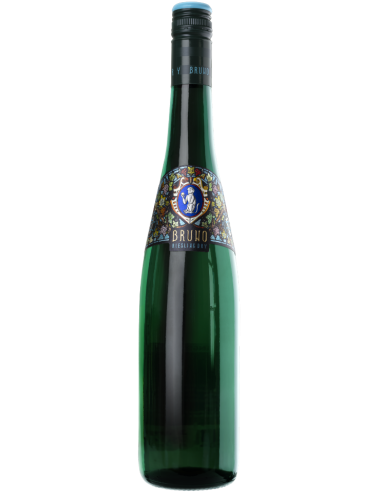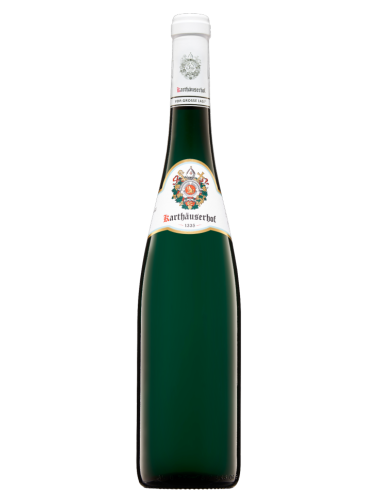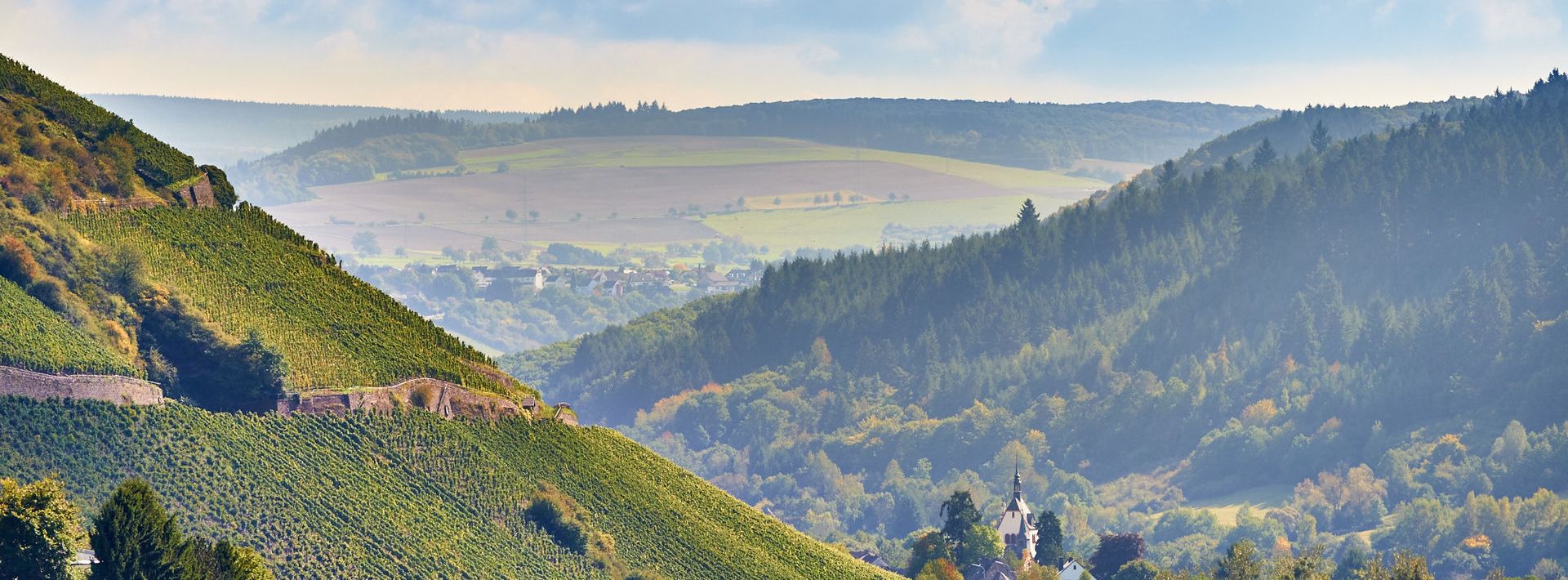
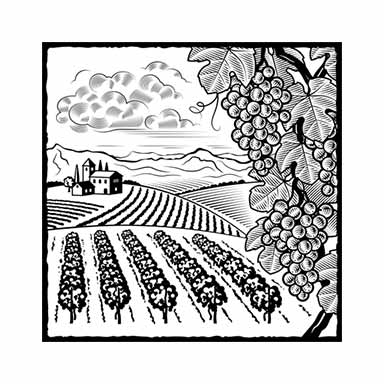
The Ruwer
The Ruwer is a tributary of the Moselle that rises at the Rösterkopf in the Osburger Hochwald and flows into the Moselle after just under 50 kilometres not far from the Karthäuserhof. On the last fifteen kilometres of the river's course between Franzenheim and its confluence with the Moselle, vines have been cultivated on the steep slopes of the Ruwer valley since ancient times. Even the Romans appreciated the Moselle, its tributaries and the particularly suitable climate. One of the earliest testimonies to viticulture on the Ruwer is the relief "Winemaker at the Wine Counter".
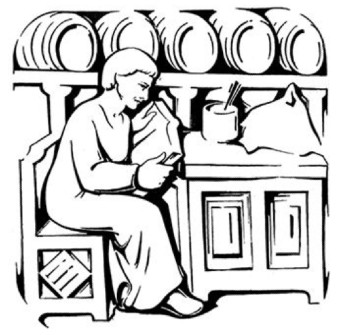
The Ruwer wine region and its vineyards
Other evidence from Roman times includes the remains of the original Roman Ruwer water conduit in Waldrach and its reconstruction on the Roman road in Waldrach, as well as the remains of a Roman stone mill in Mertesdorf.
With a wine-growing area of 190 ha, the Ruwer Valley is the smallest sub-region of the Moselle(-Saar-Ruwer). Well-known wine-growing communities are Waldrach, Kasel, Mertesdorf and Eitelsbach.
For wine connoisseurs, the names of such famous wine villages as Kasel, Mertesdorf, Waldrach or Eitelsbach and their world-famous vineyards such as Kaseler Nies'chen, Karthäuserhofberg or Maximin Grünhäuser Abtsberg are a beautiful source of inspiration. The Bishop's vineyards, the Reichsgraf von Kesselstatt winery and the Karthäuserhof are showpiece wineries here
Read MoreTypical slate soil in the Ruwer valley
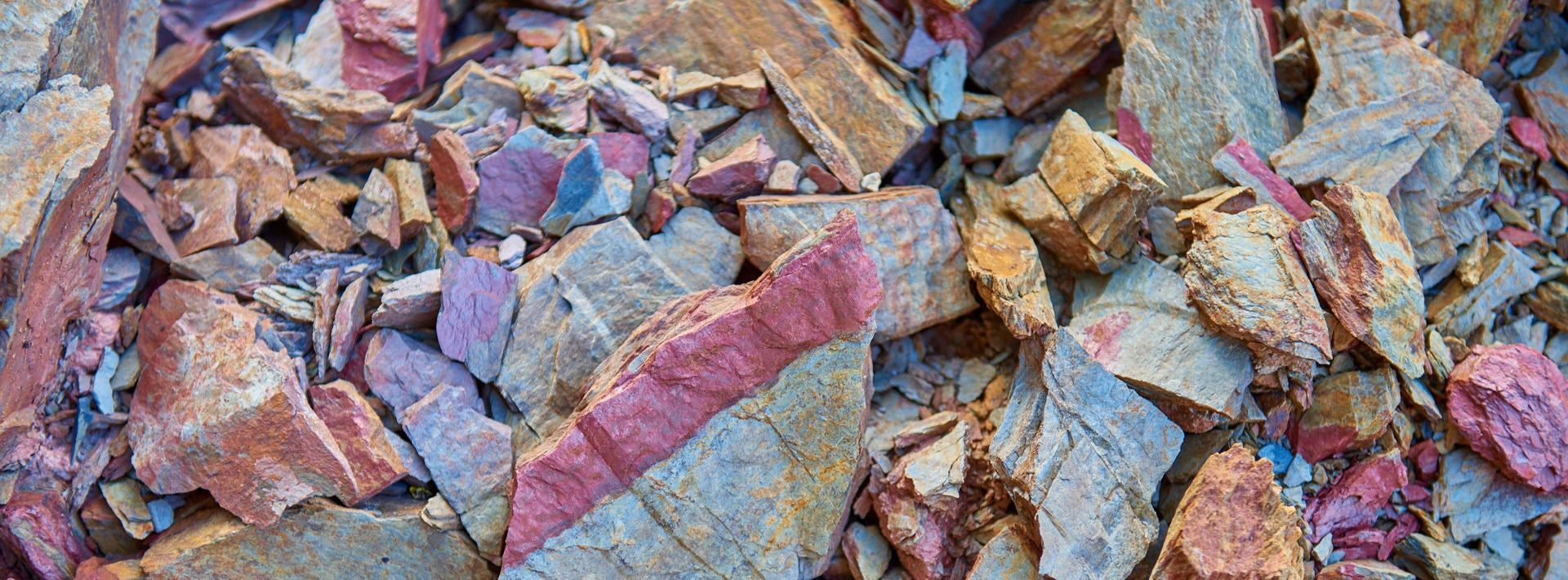
A unique micro-climate in the Ruwer valley
The wine from the Ruwer owes its uniqueness to the slate
A shorter growing cycle due to lower average temperatures than on the Mosel and more stress for the vines due to greater temperature differences between day and night allow for the legendary racy elegance and effervescence of the Ruwer Rieslings as well as their incomparable fine-fruity aromas.
Suppleness and finesse characterize the wines, while the rather low alcohol content and typical, well-integrated acidity ensure maximum digestibility without becoming a pleasure to drink. In addition, the wines are known for their exceptional longevity.
In Ruwer, dark clay shale is found from the Devonian period, which was formed about 400 million years ago. As the seabed subsided, thick layers of clay and mud sediments accumulated and were covered over the following millions of years, solidifying into stone under their own weight and that of others. Today, the soil consists largely of lime-free, clayey silt with a high proportion of dark clay shale. This absorbs rainwater very quickly and stores it only to a limited extent - both important and positive properties for viticulture. The dark soils warm up strongly during the day and release the heat to the vines during the night hours. The grapes thus receive warmth around the clock.
Grape varieties in the Ruwer Valley
The steep slopes of the growing area are planted to more than 90% with Riesling vines. Among wine connoisseurs, the Ruwer Riesling is becoming increasingly popular nationally and internationally! Pinot Noir follows with about 3% and Müller-Thurgau makes up only one percent. The choice of grape varieties is a strong indication of quality-focused viticulture.
Ruwer Riesling
Wines from the cool valley are mostly very light and mineral, yet shine with aromatic complexity precisely because of the local climatic conditions. Due to the cool microclimate and associated long ripening times, the Rieslings develop intense aromas of citrus and apple. At the same time, the acidity gives the wines a pleasant freshness and crispness. At the same time, the complexity of the Ruwer Rieslings is enhanced by a spicy minerality.
The prime vineyards of the Ruwer
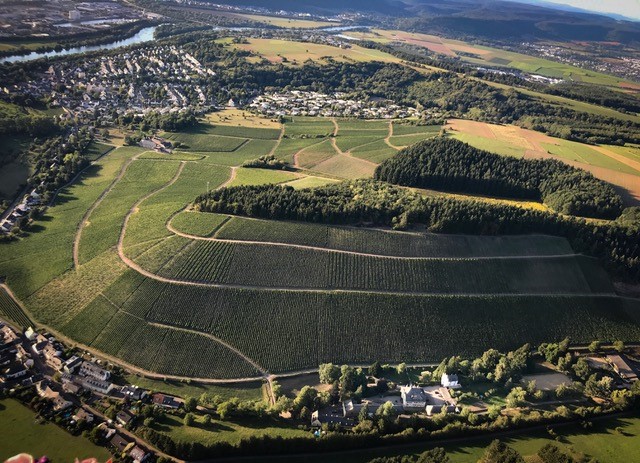
Karthäuserhofberg
The upper soils have sporadic clay intercalations in which the water holds very well. A dense mineral aroma spectrum is typical of the Karthäuserhofberg. From the top, the view extends far into the Ruwer valley, to the foothills of the Hunsrück, with the Eitelsbach valley in the immediate vicinity.
Wine estates who produce in this vineyard
-
.jpg)
Karthäuserhof
-
Nik Weis St. Urbans-Hof
The Karthäuserhofberg
is a single vineyard located in the territory of the municipality of Eitelsbach (Ruwer) in the German wine-growing region of Mosel. The vineyard, oriented from south-southeast to south-southwest at an altitude of 170 to 275 meters above sea level, covers 19 hectares of vineyards with a slope of up to 100% (45°). The stony Devonian slate weathered soils are interspersed with veins of iron ore. The water balance is good. Here 95% Riesling grapes and some Pinot Blanc are grown. The vineyards are solely owned by the Karthäuserhof.
In 1335 the vineyard was donated to the Carthusian monks by Elector Balduin of Luxembourg (1285-1354). The former division of the land into the Burgberg, Kronenberg, Orthsberg, Sang and Stirn vineyards no longer exists today.
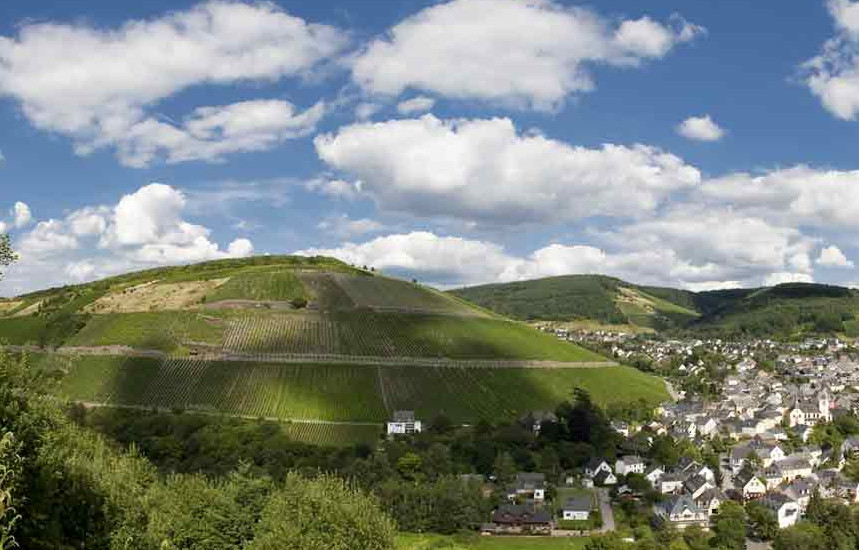
Kaseler Nies'chen
The vineyard curves from south to east, which makes the vineyard parcels very different. The vineyard extends from 141 meters to more than 270 meters above sea level and has an area of almost 16 hectares. With 770 liters per square meter, comparatively high rainfall falls on the hillside, which benefits it in dry years. This at least partially compensates for the lower water storage capacity.
Soils
Recommended Wine estates
-
Erben von Beulwitz
The soils of the steep slope consist of blue-gray iron shale soils and the percentage of stone is therefore high. In contrast, the percentage of soil in the lower areas is high because the soil is leached from above. Because of its composition, the soil heats up more than average and gives back this heat at night. This allows the vineyards of Kaseler Nies'chen to obtain good must weights even in bad years.
Riesling from Kaseler Nies'chen
On the steep slope, mainly Riesling vines were planted. After all, the Prussians had already classified the vineyard for this variety in the highest classifications. Due to climate change, the days of over-acidified Rieslings on the Ruwer are over anyway. Due to the somewhat cooler climate in the side valley around the Ruwer, the sweet Rieslings of the Kaseler Nies'chen are also produced there with a lot of tension. This is due to the long maturation periods, which allow a more intense acid structure. At the same time, the acidity does not take over!
Aromas of citrus fruits, crisp but ripe apples and fresh peaches emerge on tasting. It is especially in dry wines that the steepness can shine through with radiant clarity and freshness. At the same time, the minerality is clearly noticeable, especially on the finish.
No Product found in this category
No Product found in this category
No Product found in this category
No Product found in this category












